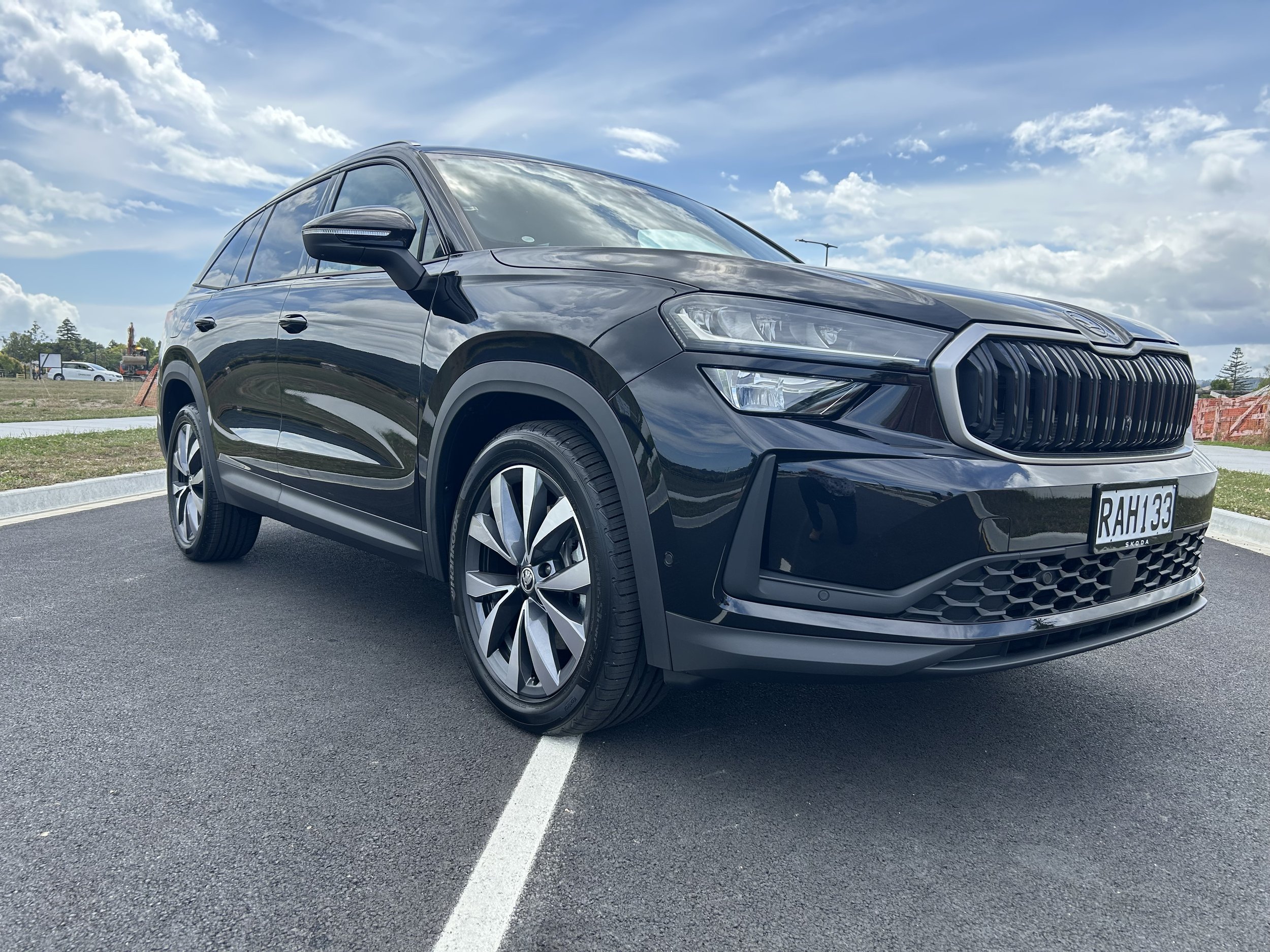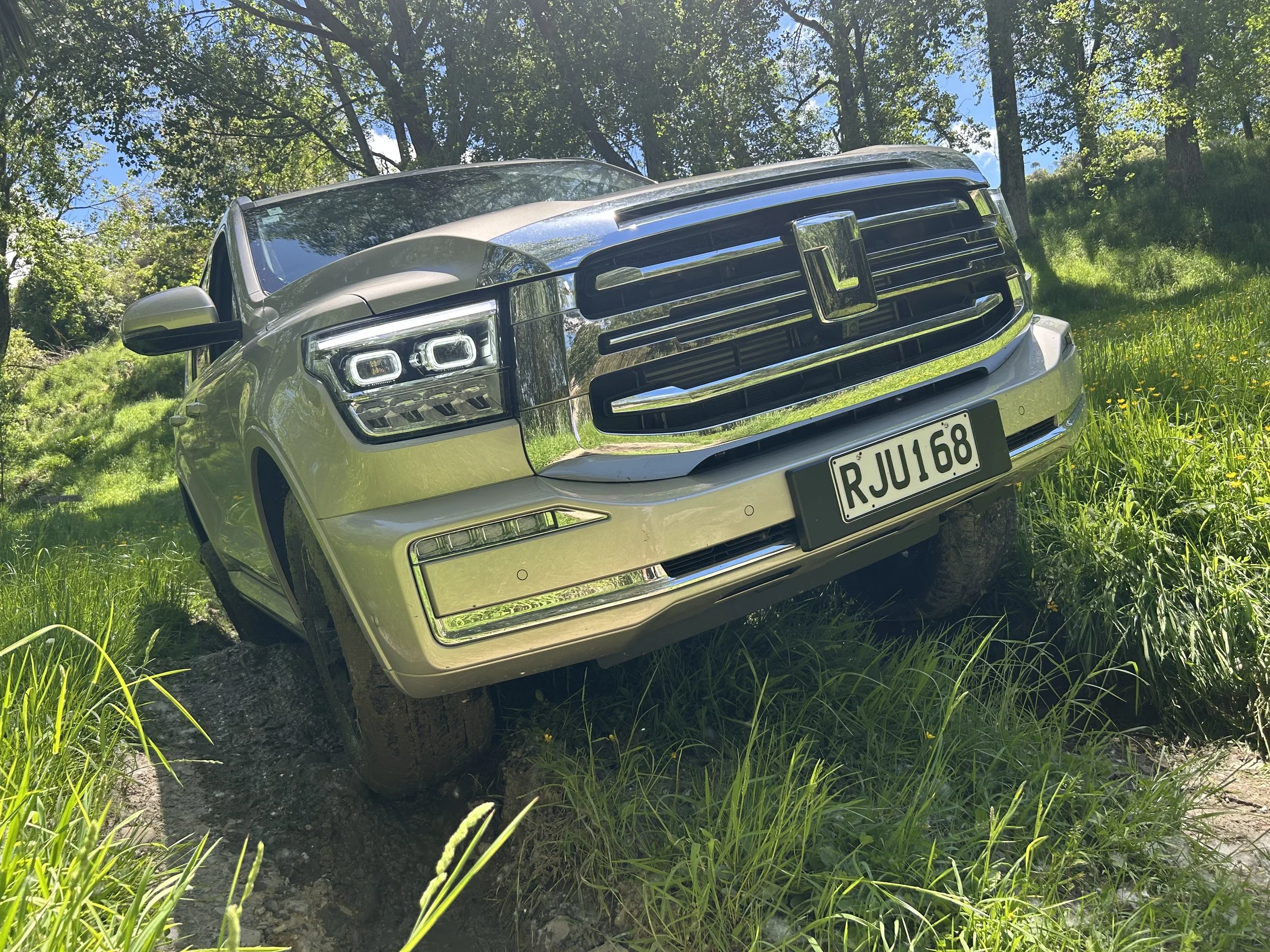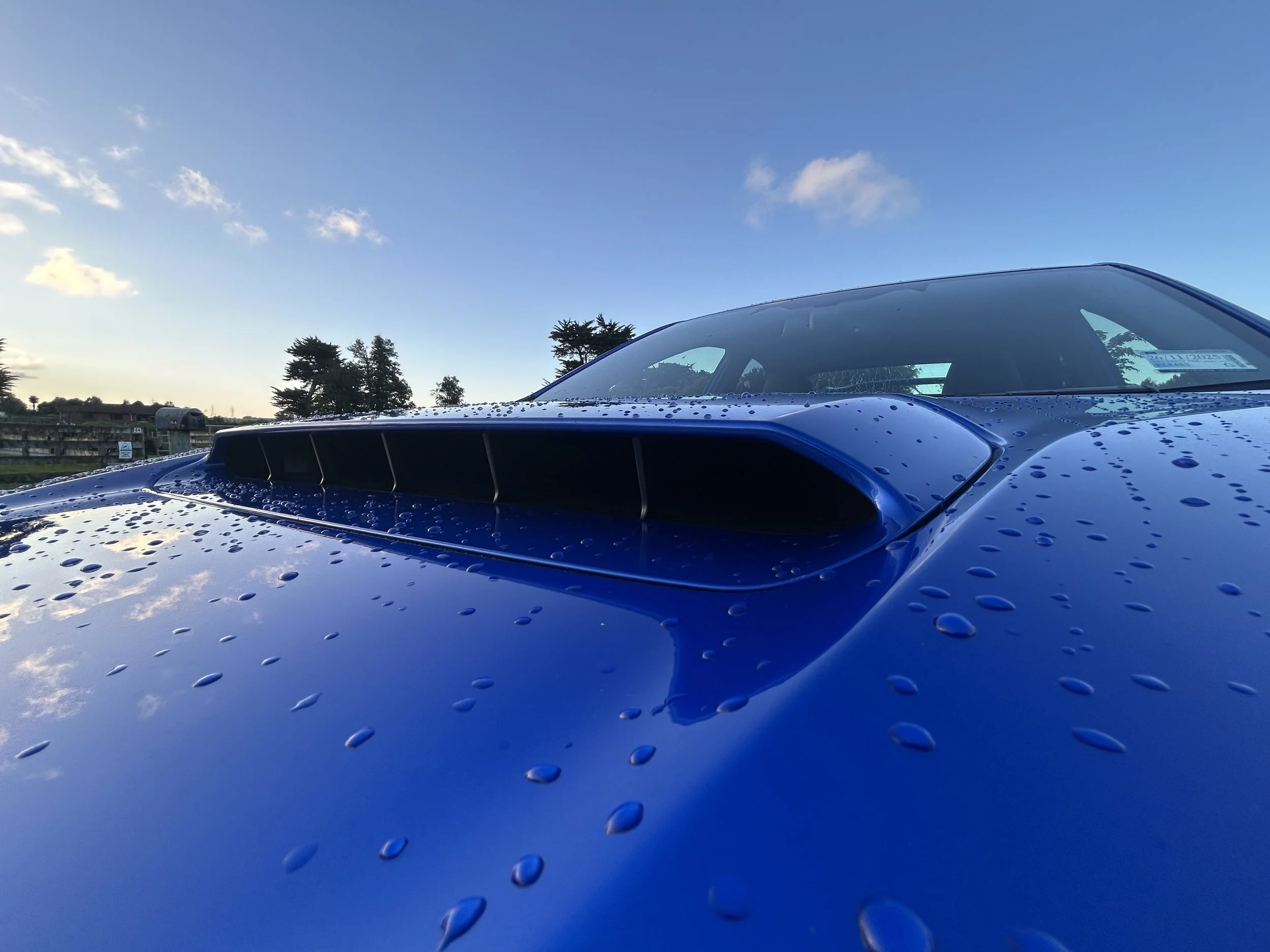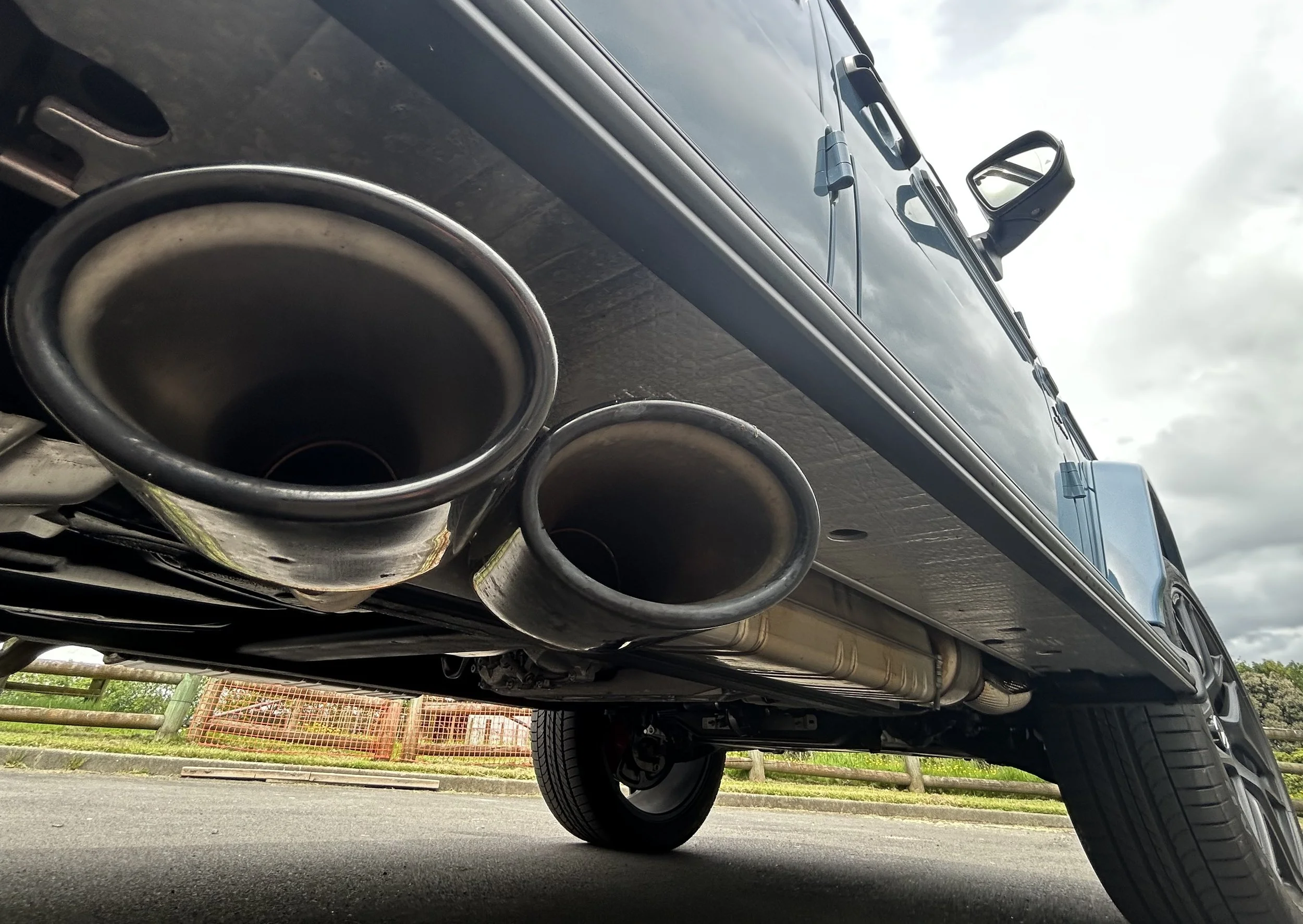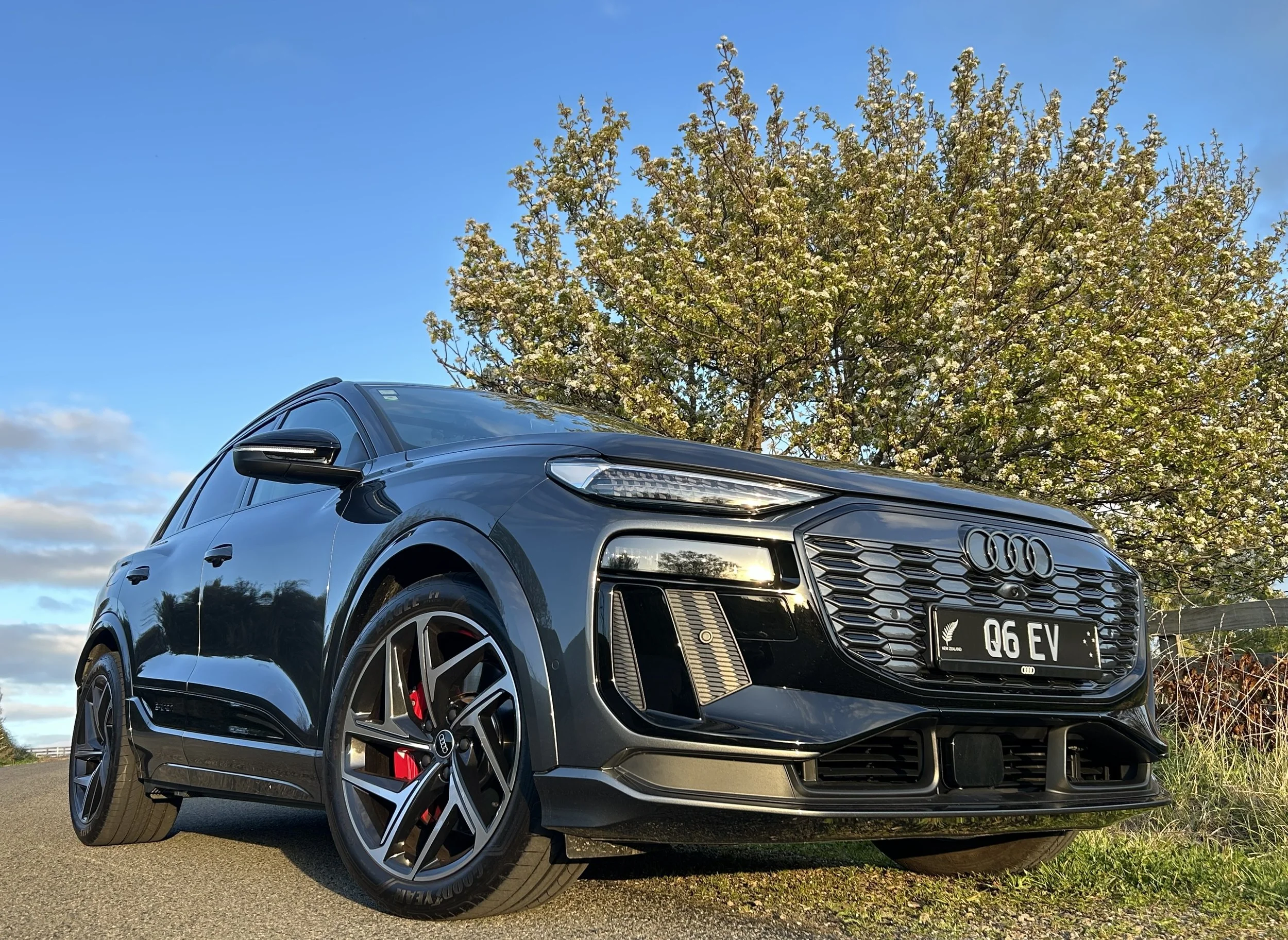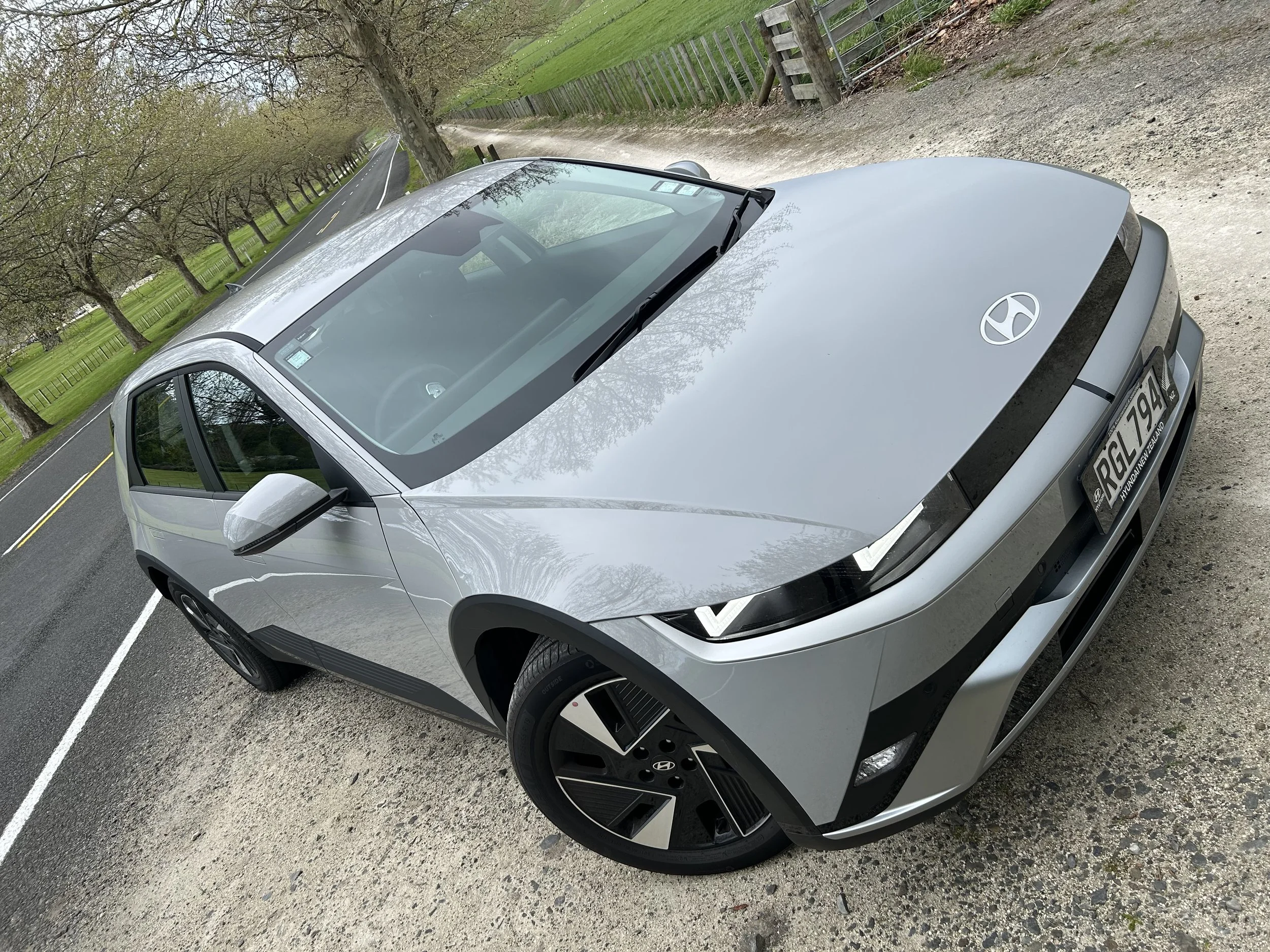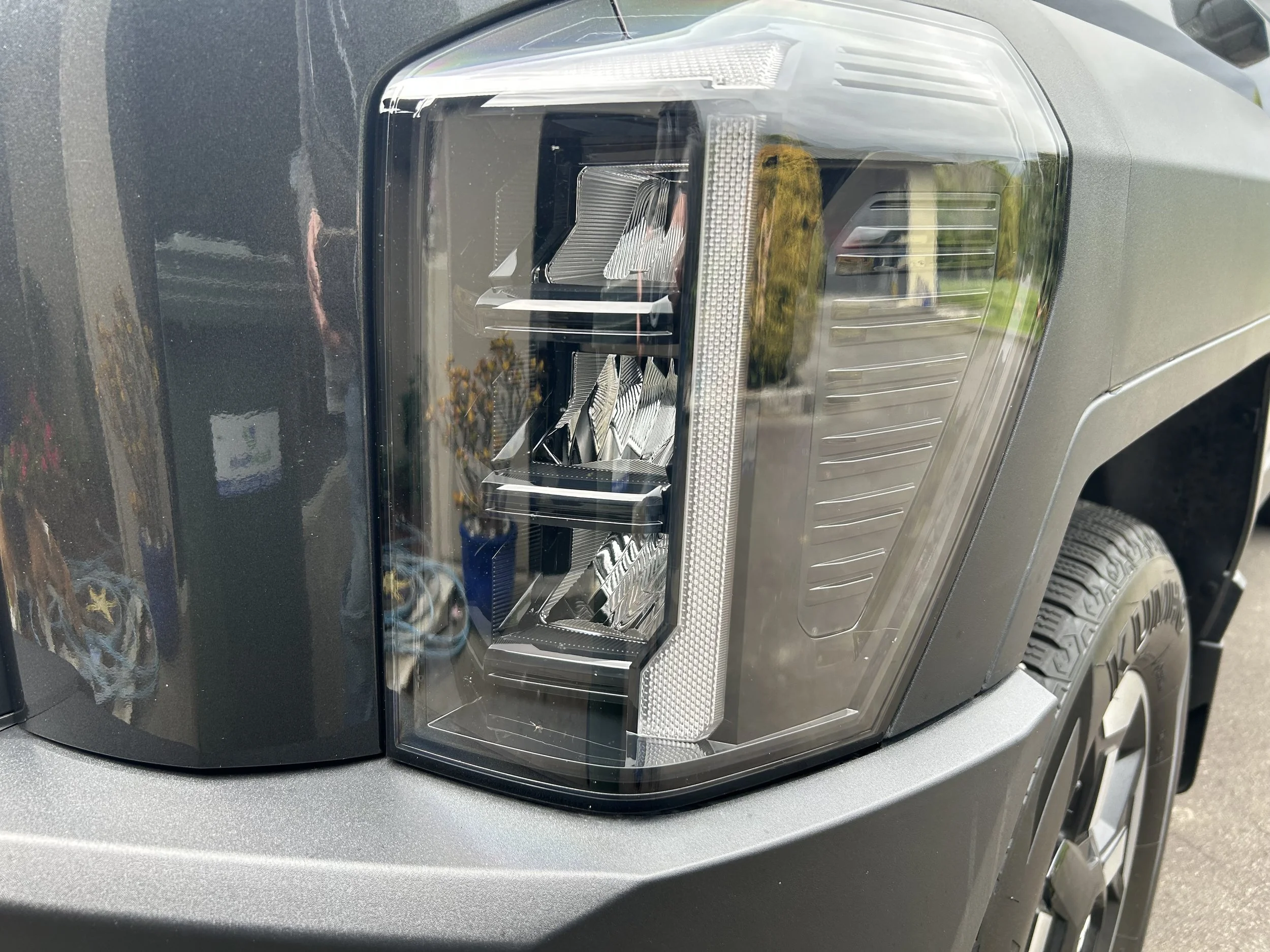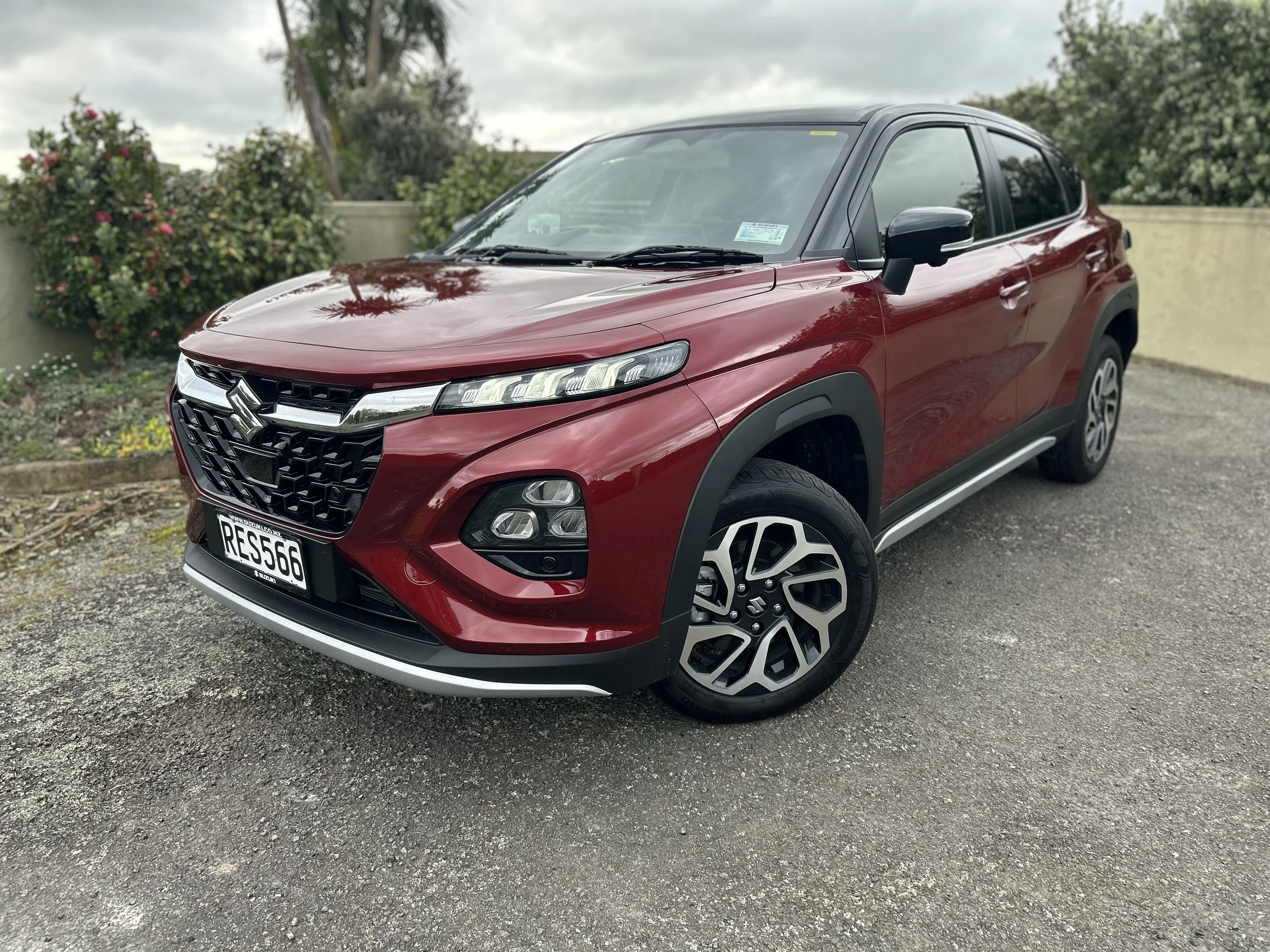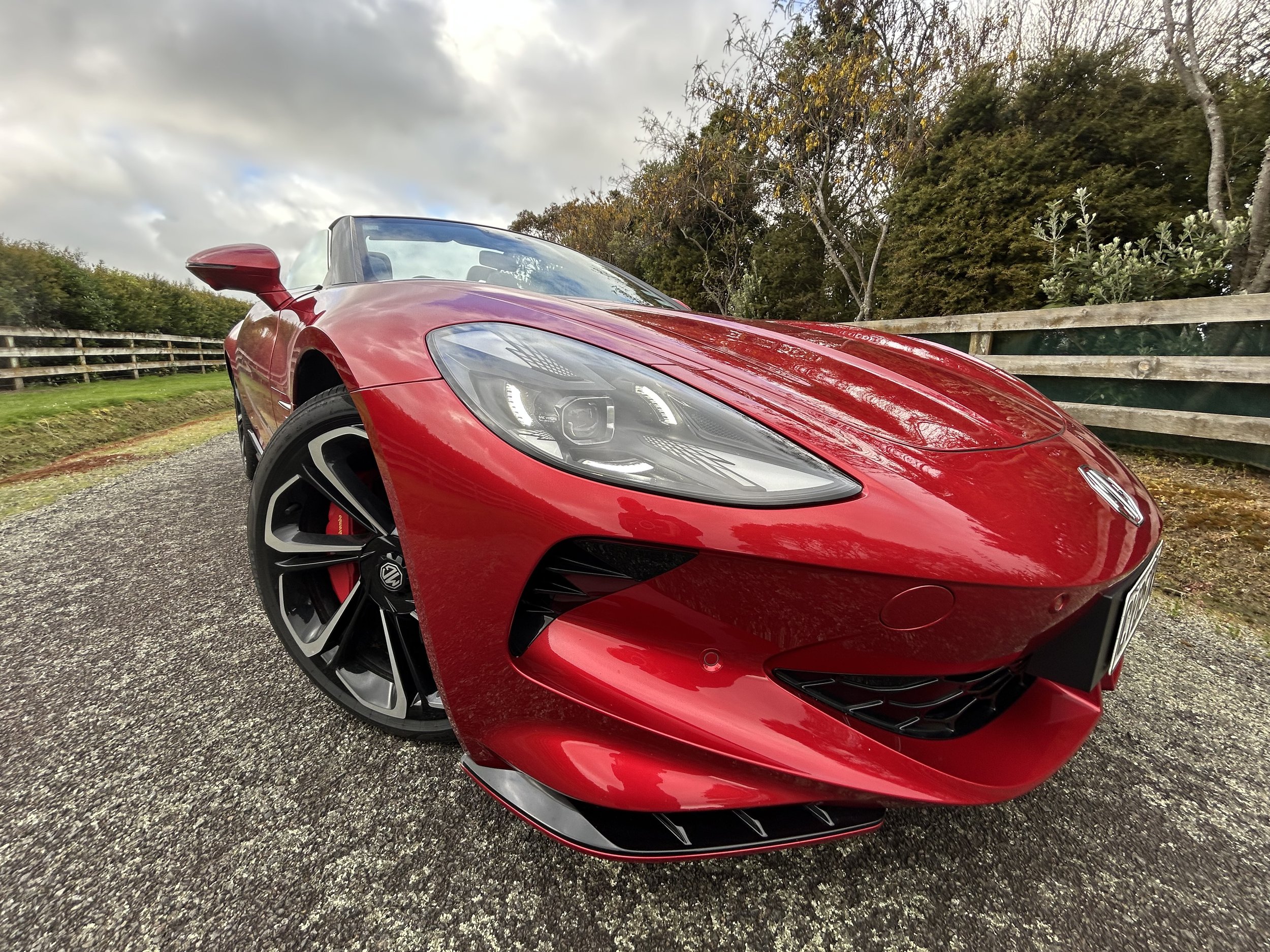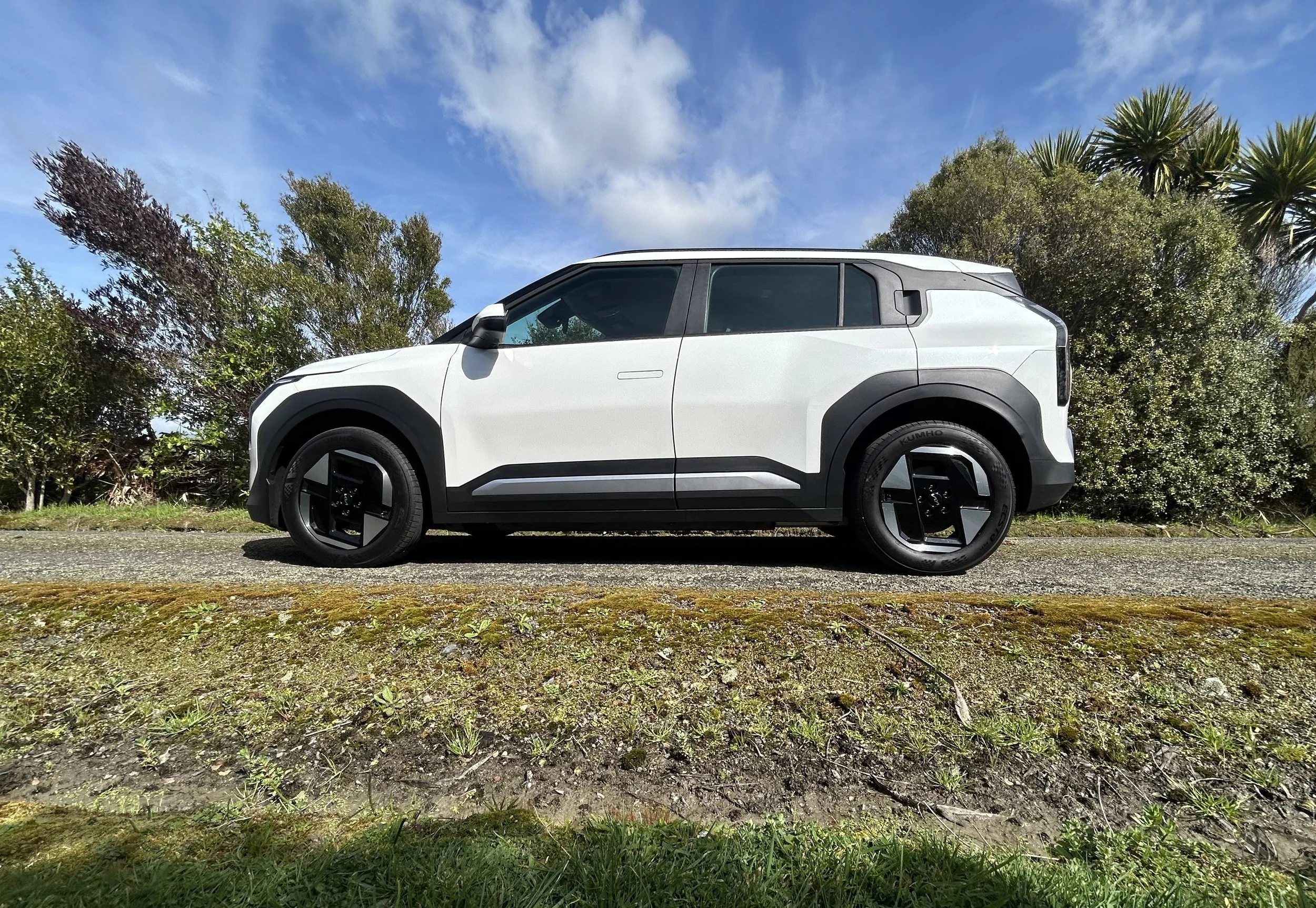Skoda Kodiaq and Superb first drive: Back to the big time
/Improved design, comfort and specification enhances already compelling packages. The driving side awaits more consideration.
LIKE the idea of a new car that instantly feels highly familiar in a warm and inviting way?
Meet the latest Kodiaq and Superb from Skoda. Each is clearly new yet, in the same way, each is … as it was before. Is this progress?
Actually, it is. They are each larger than their predecessors, introduce new technology - large touch screens and the DSG automatic gearbox selector moving up to the steering column, so you simply twist forward for go, and backwards for reverse - and are better finished and furnished.
Yet, in driving and in exterior ambience, they are clearly evolutionary, so much so you might wonder if Skoda has decided not to throw the aesthetic baby out with the design bathwater because … well, it can only refine products that were very well packaged already?
There’s probably a bit of that, to be fair. You certainly get impression of these being exercises in design refinement by kerbside assessment. Yes, both have grown - why the wagon needed to, is tenuous, as it was already super-sized already - and neither have strayed too far from previous styling templates. Sure, there’s been a lot of modernising, but both are immediately recognisable as the successors to their outgoing equivalents. A slightly larger octagonal-shaped grille, thinner headlights and maybe each has a slightly softer, simpler look compared to before. But if you’ve seen one of those before, you know what it is going forward.
Skoda has been more future-forward on the inside, both achieving a thoroughly overhauled interior, with a more en-vogue minimalist look, the Superb’s arguably a touch more high-quality.
Superb is a lower and wider car than Kodiaq, and length-wise it seems to go forever; an irony since the station wagon remains a five-seater whereas every Kodiaq is now a seven-seater.
Eyes forward, a driver of either is looking at essentially the same dashboard, and touching many of the same controls; located in the same spots, doing the same things.
The whole new console is a bit more sculpted than before and has less of the cliff-face effect, but it still looks and feels substantial. The big change is an upgrade to tablet-like touchscreens - 10 inch types in yet to show base Kodiaqs, 13 inches in the diesel type here now and standard to the Superb - and decision to deliver fewer buttons might cause shudders among the screen-phobic.
Don’t be too concerned. Skoda’s the sensible one of the VW Group. For one, the menu structure and on-screen layout is, if anything, simpler and easier to understand than it used to be.
Plus, it hasn’t completely abandoned physical controls. Three little physical rotary dials on the dashboard, referred to as ‘Smart Dials’ by Skoda, are neat idea delivering friendly assistance. Controlling the cabin temperature and the stereo volume or, at a press of the little screens built into the centre of the controls, the fan speed or the seat heating, these take a lot of the operational strain off the touchscreen.
Also, Skoda uses its latest software to run the screen, and there are some distinct improvements over what went before, including with the ‘Laura’ voice assistance, which enables off the same prompt as CarPlay’s Siri, with user preference depending on how long you hold down the control.
The full ability of the new software will reveal once it enables connected online services; that’s a work in progress, unlikely to be reconciled for another year. And, when it is, it will enable only on new product.
As is, the car is friendly to devices, with wireless Apple CarPlay plus five USB-C sockets - two each for the front and rear, and an extra one in the rear-view mirror housing.
Placing the gear selector now behind the steering wheel allows each to have generous storage area in the centre console, with adjustable cupholders, space for twin wireless phone chargers and another useful shelf. Two glove boxes - one upper and one lower - are hugely useful for Kodiaq.
The instrument display screen is also fully digital and, again, seems pleasantly useful. You can adjust the information displayed, the general layout and ‘theme’ with buttons on the steering wheel.
All this way and you’re probably starting to wonder why two cars are being spoken of almost as one. Really, it’s because for all that they are completely different cars aiming pretty much at different customer bases, there is a lot of DNA commonality.
Each is an example of pragmatism, with new bodies on top of the same core mechanical package as the predecessors. That’s just same as before, but same as each other.
Under the new clothes there’s the familiar Volkswagen Group ‘MQB’ platform that’s been around since 2015. And though in New Zealand engine ranges are different, that’s just down to local preference; the factory plan allows mutual drivetrain conformity.
To that. Having presented in the past, at various states, as a petrol and diesel, then purely diesel, then purely petrol, some with front-drive, some with all-wheel-drive, the Superb has now settled into being an all-paw car, in two levels of trim, with a common 2.0-litre petrol, making 195kW, so down 11kW on its peak output previously, in marriage with a seven-speed direct shift gearbox. It begins sale as a Superb wagon TSi 195kW 4x4 with the alternate Sportline holding a $9000 premium coming in April.
It is also a technology regression, in that it steps back from including the plug-in electric assist component that came with the previous model in its flagship private sale $80,000 iV format.
The latter placed a 1.4-litre petrol with a electric motor. this claimed 160kW/400Nm, 62 kilometres’ pure electric driving and more than 900 kilometres’ range between refills; as much as the diesel it made defunct.
Skoda NZ says it still has some iV editions of the outgoing generation car to sell and there’s potential the drivetrain might yet furnish from the factory in the new type, but no decisions have been made.
Kodiaq presents initially with a 2.0-litre turbodiesel in all-wheel-drive, with a 1.4-litre front-drive in ‘110’ base and ‘110 plus’ formats joining from March, plus a performance 2.0-litre petrol all-wheel-drive RS in June-July, this producing 15kW and 30Nm more than the outgoing generation. All are seven-speed DSG.
Big change for Kodiaq in Europe is the addition of petrol-electric. Skoda here could conceivably take both the 150kW plug-in hybrid variant which marries a 1.5-litre petrol and is said to offer 100 kilometres’ pure electric range, and a 110kW 1.5-litre 48 volt mild hybrid, with no electric-pure capability. It is trialling the latter and seems close to making a call; in respect to the PHEV there’s edginess. Not because the tech itself isn’t tasty, more to do with sales of PHEV and fully electric cars being so devastated last year. Plus, whereas the hybrid runs seven chairs, the plug-in’s larger battery restricts it to five.
The advantage of the electric assist cars is that they have good economy and such better CO2 outputs than the fully ICE choices, notably the diesel, which is a reinstatement. Previous Kodiaq flaunched with it in 2017, but then decided to drop it at point of that car’s last facelift, in 2022, as a means to achieve better fleet compliance to the Labour Government’s Clean Car emissions regulations. The change of government, and relaxation of those emissions targets, appears to have brought a change of corporate policy. Ironically, the diesel’s CO2 output now, cited at 170 grams per kilometre, means it is 2g/km dirtier. Emissions costs still occur at the border, but Skoda NZ can offset these with clean air credits earned by its electrics; the Enyaq already here and the Elroq landing in June (when Enyaq is updated).
Driving time was brief, but enough to cement good sentiment.
Pulling the diesel from Kodiaq dismayed owners; driving the new reminded why they were correct to protest. It’s the perfect choice for this kind of car; relaxed in operation - only when really gunning it do you discover the rev counter needle isn’t permanently constrained to the 1000-2000rpm zone - extremely refined, smooth and probably the engine most likely to achieve its WLTP-3 cited economy of a fraction over six litres per 100km.
I own a previous generation Superb wagon and really enjoy it; exposure to the new has, if anything, taken some of the shine from that sense of satisfaction. My now car is in Sportline spec, and that’s how I’d like to see the new one (which comes in April), but would concede already that in entry spec the car is very fulsomely specced, with even better seats for a start.
Performance-wise? Mine is a 2018 with the 206kW engine and, back in the day, you could feel the extra oomph over the 195kW that was then the base choice but is now the sole selection. The same seemed the case, but in fairness the latest car had barely any mileage so felt tight; plus I spent barely 40 minutes at the wheel, almost all on motorway. It felt good there, but so many cars do. Gut feel it has ample power and torque, but might be a bit busier than the Kodiaq’s diesel.
Specification detail common to both cars here now is solid; a hill-hold system, electronic child safety locks, seven airbags, all-round vehicle monitoring with driver assistance (which can slam on the brakes if it detects you’re about to hit something), adaptive cruise control, keyless entry and ignition, dual-wireless phone charging pad, three-zone climate control, front and rear parking sensors, a reversing camera, electric tailgate, ambient cabin lighting, heated and cooled front seats, electric driver seat adjustment and alloy wheels.
Superb’s wheelbase - the space between the axles - has not changed, but external dimensions have altered, though not significantly: 40mm longer and 5mm taller, yet also 15mm narrower than previously. Skoda is claiming a fraction more headroom in both the front and back, while one of the strongest selling points, boot space, has become even more impressive, with an additional 30 litres with all five seats in play, resulting in a whopping 690-litre figure. The car is 15 percent more aerodynamic than it was before, resulting in a coefficient of drag of just 0.25. As before, this is a simply vast car on the inside, with rear-seat passengers benefitting from such wondrous legroom it's almost embarrassing.
Kodiaq’s also more spacious than previously, though the seven seat layout asks the usual constraint of prioritising children for the rearmost zone, all in tune with its family-attracting role. In respect to that, interestingly, though it has three sets of ISOFIX mounting points - two in the middle row of seats, and one in the front passenger seat, there are none in the folding third row. The middle seats slide back and forth, so you can balance legroom between the middle and third rows.
Turn it into a five-seater and there’s a 845-litre boot up to the luggage cover, with a van-like 2000 litres with the second row stowed. The boot comes with a selection of hooks, a 12-volt power socket and little dividing panels that affix to the floor with velcro. There’s some useful under-floor storage too, where you’ll find a ‘spacesaver’ spare wheel, and a slot into which the retracting luggage blind can go when you want to get all the seats folded down.
Skoda’s ‘Simply Clever' implementations are always celebrated. As always, the cars come with umbrellas and an ice scraper., but the torch - something I like to to have, but hardly ever use - has been divested, more’s the pity. Another new feature is the tablet holder integrated into the rear armrest, which also forms the cover for the cupholders back there, and a blackboard duster-like touchscreen cleaning rod, that otherwise sites into its own armrest holder.
Overall? These are the cars Skoda does best. In 2025 they seem to be done just a bit better.
On strength of this exposure, it’s more about checking out the functionality and design; improvement to the interior quality, the technology and specifications is easy to see, though it’ll be interesting to hear feedback on what others have described as the 'Hannibal Lecter's face-grille' central dashboard trim.
As for the dynamic and true performance side? They look to stand as strong choices for those wanting an uncomplicated ownership experience, but overall a quick tootle around the outer fringes of Auckland was simply not enough to unwrap the true strength of their driving character; a far more varied route was demanded. A faff with my flight home meant I spent considerably more time driving my own Superb at the end of that day than was allowed for this combined experience of the new. Frustrating.
Historically, they’ve both been excellent relaxed distance cruisers; logically, that should still be a strength. On smooth surfaces, the isolation of tyre, wind, engine and suspension noise seems very good in both.
Also, it’s important to note that a Superb Sportline and Kodiaq RS should again be sharper, anyway, as they uptake the Dynamic Chassis Control absent from the less expensive fare, which has fixed rate shocks.
The writer attended this event as a guest of Skoda NZ, with flights, lunch and a small gift provided.


